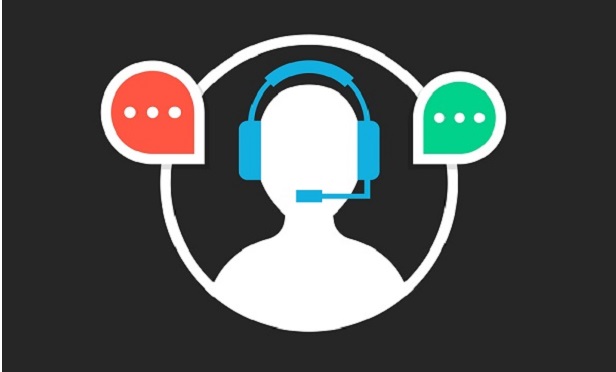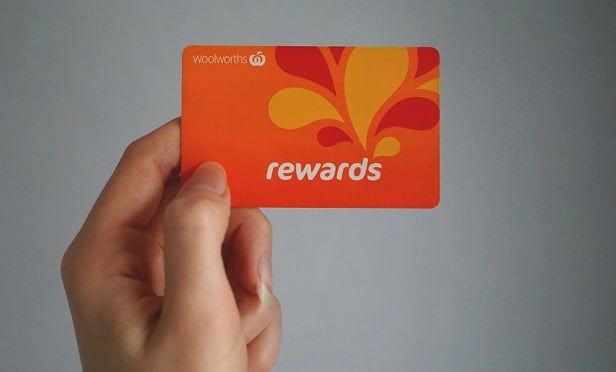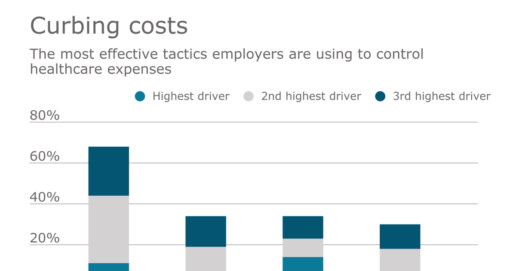4 perks to make your employees' lives easier and less stressful
Recruit top talent with ease and confidence when considering these tips on attractive, creative and innovative employment perks.
A 2016 survey from Glassdoor found that 57 percent of people looking for jobs said benefits and perks are among their top considerations when weighing offers. So how can a company stack the deck in its favor when recruiting top talent? Although some companies limit their benefits packages to traditional offerings such as health insurance, 401Ks and paid time off, a today’s forward-thinking employers know they need to find more creative ways to offer benefits that make a genuine difference in employees’ day-to-day work and personal lives.
As competition for employees intensifies, the race to improve employer-based services is likely to result in better options for employees. Unconventional benefits options come in many shapes and forms, but they share one thing in common: the goal of saving time for employees, reducing their stress, and ultimately improving their health and satisfaction at work.
All other things being equal, companies that offer innovative perks that speak to the well-being of their employees are more likely to attract and retain the top talent in their field. Here are a few such perks to consider.
Expectant-parent counseling
You’ve thrown the baby shower, cut the cake, helped carry staff gifts to the car—and you’ve explained the company’s parental leave policy in detail. As you wave Julie from accounting off with best wishes, you’re confident she’ll come back to her desk in a few months’ time.
But the truth is that 43 percent of women who have babies leave the workforce permanently within a matter of months. Many say it’s because they don’t have adequate support at home to enable them to resume their careers. That is why companies like Reddit and Slack use a service called Lucy that provides expectant employees help before, during, and after parental leave, including 24/7 messaging and one-on-one sessions that can be done in the home or online.
As Reddit VP of People Katelin Holloway put it, “It’s not enough to simply offer parental leave; every child and family is different and has independent needs.” By helping expectant parents find resources that meet their specific needs, you’re making an investment in your workforce that pays enormous dividends in retention, productivity, and morale.
Caregiving support
A Gallup survey revealed more than 1 in 6 full-time or part-time American workers has difficulty balancing caring for elderly parents with their work commitments. This results in decreased productivity and frequent leaves of absence. Companies can help their employees cope and stay engaged with their work by providing concierge services that offer amenities such as taking elderly parents to doctor’s appointments and eldercare coaching when choosing between assisted living options.
To help reduce stress (and retain highly specialized employees), take a cue from companies like Microsoft and Facebook, which provide caregiver paid-leave programs to help employees care for ailing family members or sick relatives.
Dry cleaning at work
Sometimes it’s the little things that save time during the workday that can push the needle in your favor as a potential employer. It may sound trivial, but company-provided dry cleaning is a perk that’s proving to be a big draw in workplaces from Wall Street to Silicon Valley. Service providers pick up employees’ laundry or dry cleaning items from work and return them to a designated employer closet in their office building—one less errand, and no more lost tickets. “People have lives to live, so I try to make it easy for them to deal with any of those personal errands that could take up time for them,” said Experian CEO Craig Boundy, speaking about his company’s employee benefits programs in an interview with the The Orange County Register.
Car maintenance and service
According to the U.S. Bureau of Labor Statistics, the average American household owns 1.9 vehicles and spends around 1.5 percent of its annual income on auto maintenance and repairs. Cars are a significant investment for most of us, so the more you can help potential employees save time and money on maintaining their vehicles, the more tempting you’ll become as an employer. Growing numbers of innovative companies provide car repair services to help employees save money, find the best quality mechanics, and reduce stress associated with the entire process.
Some firms also offer on-site car wash services, giving employees peace of mind and a positive outlook as they drive home after work. Several big Silicon Valley corporations —including eBay, SanDisk, Cisco, and Oracle—use BoosterFuels to fill employees’ gas tanks while they’re at work. It saves employees time and protects them from potential accidents or robberies at gas stations.
SOURCE:
Weiss Y (31 May 2018) "4 perks to make your employees' lives easier and less stressful" Web Blog Post]. Retrieved from https://www.benefitspro.com/2018/05/11/4-perks-to-make-your-employees-lives-easier-and-le/
The Most Desirable Employee Benefits
When it comes to hiring new employees, benefits can make or break the process. Hire with confidence when considering these tips on attractive and affordable employment perks.
In today’s hiring market, a generous benefits package is essential for attracting and retaining top talent. According to Glassdoor’s 2015 Employment Confidence Survey, about 60% of people report that benefits and perks are a major factor in considering whether to accept a job offer. The survey also found that 80% of employees would choose additional benefits over a pay raise.
Google is famous for its over-the-top perks, which include lunches made by a professional chef, biweekly chair massages, yoga classes, and haircuts. Twitter employees enjoy three catered meals per day, on-site acupuncture, and improv classes. SAS has a college scholarship program for the children of employees. And plenty of smaller companies have received attention for their unusual benefits, such as vacation expense reimbursement and free books.
But what should a business do if it can’t afford Google-sized benefits? You don’t need to break the bank to offer attractive extras. A new survey conducted by my team at Fractl found that, after health insurance, employees place the highest value on benefits that are relatively low-cost to employers, such as flexible hours, more paid vacation time, and work-from-home options. Furthermore, we found that certain benefits can win over some job seekers faced with higher-paying offers that come with fewer additional advantages.
As part of our study, we gave 2,000 U.S. workers, ranging in age from 18 to 81, a list of 17 benefits and asked them how heavily they would weigh the options when deciding between a high-paying job and a lower-paying job with more perks.
Better health, dental, and vision insurance topped the list, with 88% of respondents saying that they would give this benefit “some consideration” (34%) or “heavy consideration” (54%) when choosing a job. Health insurance is the most expensive benefit to provide, with an average cost of $6,435 per employee for individual coverage, or $18,142 for family coverage.
The next most-valued benefits were ones that offer flexibility and improve work-life balance. A majority of respondents reported that flexible hours, more vacation time, more work-from-home options, and unlimited vacation time could help give a lower-paying job an edge over a high-paying job with fewer benefits. Furthermore, flexibility and work-life balance are of utmost importance to a large segment of the workforce: parents. They value flexible hours and work-life balance above salary and health insurance in a potential job, according to a recent survey by FlexJobs.
Eighty-eight percent of respondents said they’d give some or heavy consideration to a job offering flexible hours, while 80% would give consideration to a job that lets them work from home. Both flexible hours and work-from-home arrangements are affordable perks for companies that want to offer appealing benefits but can’t afford an expensive benefits package. Both of these benefits typically cost the employer nothing — and often save money by lowering overhead costs.
More vacation time was an appealing perk for 80% of respondents. Paid vacation time is a complicated expense, since it’s not simply the cost of an employee’s salary for the days they are out; liability also plays into the cost. American workers are notoriously bad at using up their vacation time. Every year Americans leave $224 billion dollars in unused vacation time on the table, which creates a huge liability for employers because they often have to pay out this unused vacation time when employees leave the company. Offering an unlimited time-off policy can be a win-win for employer and employee. (Over two-thirds of our respondents said they would consider a lower-paying job with unlimited vacation.) For example, HR consulting firm Mammoth considers its unlimited time-off policy a successnot just for what it does but also for the message it sends about company culture: Employees are treated as individuals who can be trusted to responsibly manage their workload regardless of how many days they take off.
Switching to an unlimited time-off policy can solve the liability issue; wiping away the average vacation liability saves companies $1,898 per employee, according to research from Project: Time Off. And with only 1%–2% of companies currently using an unlimited time-off policy, according to the Society for Human Resource Management (SHRM), it’s clearly a benefit that can make companies more attractive.
Contrary to what employers might expect, unlimited time off doesn’t necessarily equal less productive employees and more time out of the office. A survey from The Creative Group found that only 9% of executives think productivity would decrease significantly if employees used more vacation time. In some cases, under an unlimited time-off policy, employees take the same amount of vacation time. We adopted an unlimited time-off policy at Fractl about a year ago and haven’t seen a negative impact on productivity. Our director of operations, Ryan McGonagill, says there hasn’t been a large spike in the amount of time employees spend out of the office, but the quality of work continues to improve.
Student loan and tuition assistance also ranked highly on the list of coveted benefits, with just under half of respondents reporting that these bonuses could nudge them toward a lower-paying job. A benefits survey from SHRM found that only 3% of companiescurrently offer student loan assistance, and 52% of companies provide graduate educational assistance. Although education assistance sounds costly, companies can take advantage of a tax break; employers can provide up to $5,250 per employee per year for tuition tax free.
Job benefits that don’t directly impact an individual’s lifestyle and finances were the least coveted by survey respondents, such as in-office freebies like food and coffee. Company-sponsored gatherings like team-bonding activities and retreats were low on the list as well. This isn’t to say these benefits aren’t valued by employees, but rather that these perks probably aren’t important enough on their own to convince a job candidate to choose a company.
We noticed gender differences regarding certain benefits. Most notable, women were more likely to prefer family benefits like paid parental leave and free day care services. Parental leave is of high value to female employees: 25% of women said they’d give parental leave heavy consideration when choosing a job (only 14% of men said the same). Men were more likely than women to value team-bonding events, retreats, and free food. Both genders value fitness-related perks, albeit different types. Women are more likely to prefer free fitness and yoga classes, while men are more likely to prefer an on-site gym and free gym memberships.
Our survey findings suggest that providing the right mix of benefits that are both inexpensive and highly sought after among job seekers can give a competitive edge to businesses that can’t afford high salaries and pricier job perks.
SOURCE:
Jones K (30 May 2018). [Web Blog Post]. Retrieved from address https://hbr.org/2017/02/the-most-desirable-employee-benefits
Benefit change could raise costs for patients getting drug copay assistance
Health plans may change with time. Know what to expect and how to respond with these tips on how to avoid unexpected changes.
Since Kristen Catton started taking the drug Gilenya two years ago, she’s had only one minor relapse of her multiple sclerosis, following a bout of the flu.
She can walk comfortably, see clearly and work part time as a nurse case manager at a hospital near her home in Columbus, Ohio. This is a big step forward; two drugs she previously tried failed to control her physical symptoms or prevent repeated flare-ups.
This year, Catton, 48, got a shock. Her health insurance plan changed the way it handles the payments that the drugmaker Novartis makes to help cover her prescription’s cost. Her copayment is roughly $3,800 a month, but Novartis helps reduce that out-of-pocket expense with payments to the health plan. The prescription costs about $90,000 a year.
Those Novartis payments no longer counted toward her family plan’s $8,800 annual pharmacy deductible. That meant once she hit the drugmaker’s payment cap for the copay assistance in April, she would have to pay the entire copayment herself until her pharmacy deductible was met.
Catton is one of a growing number of consumers taking expensive drugs who are discovering they are no longer insulated by copay assistance programs that help cover their costs. Through such programs, consumers typically owe nothing or have modest monthly copayments for pricey drugs because many drug manufacturers pay a patient’s portion of the cost to the health plan, which chips away at the consumer’s deductible and out-of-pocket maximum limits until the health plan starts paying the whole tab.
Under new “copay accumulator” programs, that no longer happens.
In these programs, the monthly copayments drug companies make don’t count toward patients’ plan deductibles or out-of-pocket maximums. Once patients hit the annual limit on a drugmaker’s copay assistance program, they’re on the hook for their entire monthly copayment until they reach their plan deductible and spending limits.
Catton put the $3,800 May copayment on a credit card. She knows her insurer will start paying the entire tab once she hits the pharmacy deductible. But, she said, she can’t afford to pay nearly $9,000 a year out-of-pocket for the foreseeable future.
“I’m talking to my doctor to see if I can I take it every other day,” she said. “I guess I’m winging it until I can figure out what to do.”
Drug copay assistance programs have long been controversial.
Proponents say that in an age of increasingly high deductibles and coinsurance charges, such help is the only way some patients can afford crucial medications.
But opponents say the programs increase drug spending on expensive brand-name drugs by discouraging people from using more cost-effective alternatives.
Switching to a cheaper drug may not be an option, said Bari Talente, executive vice president for advocacy at the National Multiple Sclerosis Society.
“Generally the multiple sclerosis drugs are not substitutable,” she said. “Most have different mechanisms of action, different administration and different side effect profiles.” Generics, when they’re available, are pricey too, typically costing $60,000 or more annually, she said.
Most MS drug annual copay assistance limits, if they have them, are between $9,000 and $12,000, Talente said.
Employers argue that the drug copayment programs are an attempt to circumvent their efforts to manage health care costs. For example, employers may try to discourage the use of a specialty drug when there’s a lower-cost drug available by requiring higher patient cost sharing.
There’s also the issue of fairness.
“From an employer perspective, everyone under the plan has to be treated the same,” said Brian Marcotte, president and CEO of the National Business Group on Health (NBGH), which represents large employers.
If someone needs medical care such as surgery, for example, that person doesn’t get help covering his deductible, while the person with the expensive drug might, he said.
According to an NBGH survey of about 140 multistate employers with at least 5,000 workers, 17 percent reported they have a copay accumulator program in place this year, Marcotte said. Fifty-six percent reported they’re considering them for 2019 or 2020.
If there is no comparable drug available, drug copayment programs may have a role to play if they can be structured so that participating patients are paying some amount toward their deductible, Marcotte said. But, he said, assistance programs for drugs that are available from more than source, such as a brand drug that is also available as a generic, shouldn’t be allowed.
In 2016, 20 percent of prescriptions for brand-name drugs used a drug copay assistance coupon, according to an analysis by researchers at the USC Schaeffer Center for Health Policy and Economics. Among the top 200 drugs based on spending in 2014, the study found that 132 were brand-name drugs, and 90 of them offered copay coupons. Fifty-one percent of the drugs with copay coupons had no substitute at all or only another brand drug as a close therapeutic substitute, the analysis found.
Advocates for people with HIV and AIDS say copay accumulators are cropping up in their patients’ plans and beginning to cause patients trouble. Drugs to treat HIV typically don’t have generic alternatives.
The biggest impact for the community their organizations serve may be for PrEP, a daily pill that helps prevent HIV infection, said Carl Schmid, deputy executive director at the AIDS Institute, an advocacy group. A 30-day supply of PrEP (brand-name Truvada) can cost nearly $2,000. Drug manufacturer Gilead offers a copay assistance program that covers up to $3,600 annually in copay assistance, with no limit on how much is paid per month.
“They’re at risk for HIV, they know it and want to protect themselves,” Schmid said. “It’s a public health issue.”
Earlier this month, the AIDS Institute was among 60 HIV organizations that sent letters to state attorneys general and insurance commissioners across the country asking them to investigate this practice, which has emerged in employer and marketplace plans this year.
Compounding advocates’ concerns is the fact that these coverage changes are frequently not communicated clearly to patients, Schmid said. They are typically buried deep in the plan documents and don’t appear in the user-friendly summary of benefits and coverage that consumers receive from their health plan.
“How is a patient to know?” Schmid asks. They learn of the change only when they get a big bill midway through the year. “And then they’re stuck.”
SOURCE:
Andrews M (25 MAY 2018). [Web Blog Post]. Retrieved from address https://khn.org/news/benefit-change-could-raise-costs-for-patients-getting-drug-copay-assistance/
LIMRA aims to shape benefits data exchange standard
How will LIMRA shape the benefits data exchange standard? Find out in this article from Benefits Pro.
LIMRA wants to help develop electronic data transmission standards for the employee benefits market.
The life and health market research group, has formed an alliance with the Object Management Group (OMG), a nonprofit technology standards group based in Needham, Massachusetts.
LIMRA has been working on the benefits market data standards issue for more than a year.
To help benefits market players develop standards, OMG has set up a Workplace Benefits Domain Task Force. The chairs of the new task force are Edie Bice of Unum; InAh Chambers of LIMRA; and Aaron Roby of Texas Life.
The task force organizers hope to develop data exchange standards for non-medical, non-retirement benefits.
The standards could apply both to group benefits and to individual benefits products sold at the worksite.
Organizers say the new task force will be open to benefits brokers, independent benefit plan administrators, benefits administration technology vendors, and insurers that offer non-medical, non-retirement employee benefits products.
The task force will start its first face-to-face meeting June 18, in Boston.
Source:
Bell A. (4 May 2018). "LIMRA aims to shape benefits data exchange standard" [web blog post]. Retrieved from address https://bit.ly/2wfIZey
These 3 industries are leading the way in HDHP adoption
Interested in knowing which industries are leadig the way in HDHP adoption? Check out this blog article.
Employers in the education, health care, manufacturing and retail sectors are using a variety of tactics to drive selection of HDHPs, with varying levels of adoption from employees, so says the report, based on anonymous employee benefit election data on the Benefitfocus Platform from more than 540 large employers in those sectors.
In the education sector, HDHPs are becoming less the exception, more the rule.
“Back in 2016, traditional health plans like PPOs and HMOs represented an overwhelming majority of health plan offerings and elections among employers in the education industry,” the authors write. “But just two short years later, things look completely different. In an industry known historically for its generous health insurance benefits, the HDHP has made remarkable gains in popularity.”
The share of employers in the education sector offering at least one HDHP has more than doubled since 2016, from 23 to 50 percent, according to the report. Employers have done a lot to make HDHPs attractive — they now pay 87 percent of the total HDHP premium and have doubled their contribution to employees’ HSAs since 2016. Their efforts have worked — 34 percent of employees selected an HDHP when given the choice for 2018, up from 20 percent two years ago.
In the health care sector, employers are encouraging consumer-driven plans with moderate success, according to the report.
“Over the past two years, employers in the health care industry have taken steps to shift more health insurance costs onto employees, while providing ways to help them manage the additional burden,” the authors write. “But there remains a long runway of opportunity for these organizations to boost adoption of the consumer-driven health care model.”
The number of employers offering HDHPs has nearly doubled in two years, with 73 percent offering at least one in 2018, up from 41 percent in 2016. However, despite there efforts, only 27 percent of employees selected an HDHP for 2018. Health care employers are likely trying to raise the adoption rate by transferring more PPO plan costs onto workers — the average employee premium contribution for a single-coverage PPO is up 24 percent from 2016.
In the manufacturing sector, despite boom in HDHP offerings among those employers, more of their workers are still opting for PPOs. “Manufacturing employers have displayed a particularly strong and growing enthusiasm for HDHPs in recent years,” the authors write. “But cost-sharing dynamics appear to be driving employees away from these plans and back into traditional health plans. Meanwhile, voluntary benefits maintain above-average popularity among both employers and employees.” The majority (88 percent) of employers in manufacturing now offer an HDHP, up from 54 percent in 2016. However, the percentage of employees electing an HDHP continues to decrease, while PPO participation grew from 36 percent in 2016, to 57 percent for 2018.
The report also found that voluntary benefits have become increasingly prevalent among manufacturers, with nearly 60 percent of employers offering at least one for 2018, up from 34 percent in 2016.
In the retail sector, employees shoulder more health plan costs, while more employers offer voluntary benefits to supplement coverage, according to the report.
“As employers in the retail industry look to keep benefit costs under control, health care is getting more expensive for their employees,” the authors write. “And while voluntary benefits offer additional financial protection for the majority of these workers, there remains a long runway of opportunity for health spending accounts to help them manage their out-of-pocket liabilities.”
Retail employers offering at least one HDHP increased from 55 percent in 2016 to 76 percent. Nearly half (40 percent) of their employees elected HDHPs, but premiums for these plans are rising, with the average annual employee contribution for a single-coverage HDHP up nearly 20 percent since 2016.
Despite HDHP prevalence, retail employers contributed 40 percent less to HSAs than the average for all employers, and employees contributed 20 percent less than peers in other industries. To supplement coverage, 56 percent of employers offered at least one voluntary benefit, up from 43 percent in 2016.
“Everywhere you turn there’s a story about rising health care costs,” says Ray August. “What employers in every industry have in common is the struggle to economically provide the best plans and care for their employees.”
Source:
Kuehner-Hebert K. (7 May 2018). "These 3 industries are leading the way in HDHP adoption" [web blog post]. Retrieved from address https://bit.ly/2FUf4Ii
Student loan benefits more popular with workers than employers
"While a student loan benefit is the most-requested financial benefit, it’s only third on the priority list for HR professionals." Find out more in this article.
If you ask them, 78 percent of employees laboring under a load of student debt will tell you that they want their bosses to provide a student loan benefit that will help them dig out.
Bosses, not so much. While a student loan benefit is the most-requested financial benefit, according to an HRDive report, it’s only third on the priority list for HR professionals.
Related: The problem with student-loan repayment benefits
It’s not just younger workers who want it, either. The 78 percent of employees who wish their jobs came with a student loan benefit includes 65 percent of workers over age 55 who have problems with current or future loan debt.
The report points to a CommonBond study that finds student loan benefits not only help to keep employees on the payroll and even better their job performance, but they also help in recruiting new talent. The study finds that 75 percent of all workers have paid for their own education via student loans, and 21 percent plan to take out student loans for a child or another family member in the next five years.
Oh, and another disconnect between boss and worker: while 75 percent of HR executives think their benefits offerings are innovative, only 50 percent of workers agree.
Money, of course, is a big worry for workers—and it’s not all about salary, with 44 million Americans weighed down by some $1.4 trillion in student debt. Worrying about lingering student loans also cuts productivity at work, in addition to subjecting workers to increasing stress, so it’s really an employer’s problem too.
Not only do students owe an average of more than $25,000 by graduation, figures from The Student Loan Report indicate that the loan default rate and delinquency rates are more than 10 percent and 5 percent, respectively—not exactly conducive to either peace of mind or high productivity at work. So employers are increasingly getting involved, considering tuition payment programs for employees who want to pursue a degree or add new skills.
And that can help both groups as employers become increasingly desperate for a more skilled employee base. It also helps employers as employee stress falls, potentially cutting health care costs as well and making workers more productive.
Source:
Satter M. (7 May 2018). "Student loan benefits more popular with workers than employers" [web blog post]. Retrieved from address https://bit.ly/2wi9yA0
10 perks that help attract and retain workers
Job seekers and employees today have more control over their careers than ever before. Leaving current positions for better opportunities, and being more selective when applying for a new job, are now commonplace.
With the war for talent in full effect, companies of all sizes have had to take a close look at their compensation and employee benefits to ensure that they meet, or preferably exceed, expectations.
While keeping up with the latest employee benefits trends is one great way to maximize benefit plans, employers should also explore additional employee and workplace perks to help with recruiting, retention and engagement.
1. Free snacks and coffee
 (Photos: Shutterstock)
(Photos: Shutterstock)
An often-overlooked way to enhance the workplace is to provide employees with complimentary snacks and coffee. Not only does this help employees save a few dollars each day, but office snacks have shown to increase workplace production. And offering employees healthy alternatives can get people more energized and involved with a company’s overall wellness program.
2. Flexible work schedules
 One of the biggest trends in the business world has been a shift away from the traditional 9 to 5 work day. While some positions require such a schedule, more and more companies are enabling employees to have more flexibility with their working hours. As a matter of fact, many businesses are including flexible working schedules in their job descriptions and on career sites to help attract younger job seekers. As work-life balance continues to become more important to employees, flexible working schedules can be valuable perk for employers to offer.
One of the biggest trends in the business world has been a shift away from the traditional 9 to 5 work day. While some positions require such a schedule, more and more companies are enabling employees to have more flexibility with their working hours. As a matter of fact, many businesses are including flexible working schedules in their job descriptions and on career sites to help attract younger job seekers. As work-life balance continues to become more important to employees, flexible working schedules can be valuable perk for employers to offer.
3. Working from home
 While telecommuting is becoming more common, not all employees can exclusively work-from-home. However, enabling employees to work at home on occasion can be a great perk for keeping employees happy and engaged. Providing employees with the tools and resources necessary to work from home when needed can greatly assist with lowering turnover, and can also help reduce stress and improve the employee experience.
While telecommuting is becoming more common, not all employees can exclusively work-from-home. However, enabling employees to work at home on occasion can be a great perk for keeping employees happy and engaged. Providing employees with the tools and resources necessary to work from home when needed can greatly assist with lowering turnover, and can also help reduce stress and improve the employee experience.
4. Employee assistance programs
 A greater focus on employee wellness – both physical AND mental – is occurring in companies big and small. One way to help with this initiative is to have an employee assistance program (EAP). These programs provide counseling to employees for both professional and personal issues, and can include consultations with licensed clinicians for financial and legal services, grief counseling, and day-to-day support for full-time employees and anyone in their household.
A greater focus on employee wellness – both physical AND mental – is occurring in companies big and small. One way to help with this initiative is to have an employee assistance program (EAP). These programs provide counseling to employees for both professional and personal issues, and can include consultations with licensed clinicians for financial and legal services, grief counseling, and day-to-day support for full-time employees and anyone in their household.
5. Company events
 You have probably seen or heard of Fortune-500 companies throwing elaborate and expensive events for their workforce. While small employers can’t do something to this level, having company-sponsored events throughout the year is a great way to boost employee morale and build a culture. These events also present an opportunity to boost employer branding and recruitment marketing efforts. Things like company picnics, holiday parties, and even individual team outings (such as a bowling night) help to boost company morale.
You have probably seen or heard of Fortune-500 companies throwing elaborate and expensive events for their workforce. While small employers can’t do something to this level, having company-sponsored events throughout the year is a great way to boost employee morale and build a culture. These events also present an opportunity to boost employer branding and recruitment marketing efforts. Things like company picnics, holiday parties, and even individual team outings (such as a bowling night) help to boost company morale.
6. Employee referral programs
 Hiring the best talent is a mission all companies have in common. But with recruiting more challenging than ever, it can be difficult to accomplish this goal. However, establishing an employee referral program (especially one that provides a cash or bonus reward) is a fantastic way to get your entire company involved with recruiting. These programs also help employees feel more invested in their organizations, especially if they can bring friends or professional colleagues to their organization.
Hiring the best talent is a mission all companies have in common. But with recruiting more challenging than ever, it can be difficult to accomplish this goal. However, establishing an employee referral program (especially one that provides a cash or bonus reward) is a fantastic way to get your entire company involved with recruiting. These programs also help employees feel more invested in their organizations, especially if they can bring friends or professional colleagues to their organization.
7. Lunch and learns
 Learning and development is important to employees. While investing in large-scale programs and bringing in industry experts on a routine basis may not be possible, each company has their own subject-matter-experts who can provide learning opportunities to their co-workers. A monthly lunch and learn session can be a great way to inform the entire company on new initiatives and projects, as well as boost employee engagement throughout the company.
Learning and development is important to employees. While investing in large-scale programs and bringing in industry experts on a routine basis may not be possible, each company has their own subject-matter-experts who can provide learning opportunities to their co-workers. A monthly lunch and learn session can be a great way to inform the entire company on new initiatives and projects, as well as boost employee engagement throughout the company.
8. Employee discounts
 Another great additional perk that employees will enjoy are discounts on certain items or events. Discounts on items like clothing brands, tech, Broadway shows, sporting events, and many others can help employees save money while enjoying things that they enjoy. These types of perks are becoming increasingly popular, even for smaller employers and can be a great tool in recruiting. Not to mention the role they play with employee happiness, engagements, and ultimately retention.
Another great additional perk that employees will enjoy are discounts on certain items or events. Discounts on items like clothing brands, tech, Broadway shows, sporting events, and many others can help employees save money while enjoying things that they enjoy. These types of perks are becoming increasingly popular, even for smaller employers and can be a great tool in recruiting. Not to mention the role they play with employee happiness, engagements, and ultimately retention.
9. Summer hours
 We discussed earlier about the value of flexible work schedules. A fantastic addition to an already popular perk, giving employees summer working hours are a great way to boost happiness and morale. For example, many companies let employees leave the office early on Fridays to get a head start on their weekend plans. With work-life balance becoming more important, this simple perk can be a great for current and future employees alike!
We discussed earlier about the value of flexible work schedules. A fantastic addition to an already popular perk, giving employees summer working hours are a great way to boost happiness and morale. For example, many companies let employees leave the office early on Fridays to get a head start on their weekend plans. With work-life balance becoming more important, this simple perk can be a great for current and future employees alike!
10. Employee rewards and recognition
 Boosting employee engagement and the overall employee experience are critical objectives for all companies today. An excellent way to help with these goals are to recognize and reward employees throughout the year. Whether it’s completing a difficult or important project, reaching certain milestones with the organization (such as years of service), or completing outside education, these can all be extremely valuable for the individual and the company. Additionally, providing rewards along with recognition can go a long way to building engaged culture and a great employer brand.
Boosting employee engagement and the overall employee experience are critical objectives for all companies today. An excellent way to help with these goals are to recognize and reward employees throughout the year. Whether it’s completing a difficult or important project, reaching certain milestones with the organization (such as years of service), or completing outside education, these can all be extremely valuable for the individual and the company. Additionally, providing rewards along with recognition can go a long way to building engaged culture and a great employer brand.
Source: Altiero M. (3 April 2018). "10 perks that help attract and retain workers" [Web Blog Post]. Retrieved from Benefits Pro.
Is Ergonomics A "Must-Have" For Your Workplace Wellness Plan?
Workplace wellness in most organizations centres around health promotion activity or policy development to support healthy behaviour and improve health outcomes in the workplace. A "workplace wellness" Google search reveals a range of programs focused on fitness, weight management, smoking cessation, stress management, work-life balance and occasionally flexible work scheduling. These are legitimately important aspects targeted at improving specific health outcomes.
It is important to realize that the average office worker spends over 65 per cent of their time at work in a sedentary seated position. No doubt you have seen the media campaigns touting the health concerns related to sedentary behaviour, some going as far as labelling sitting as the new smoking. Prolonged sitting has been associated with cardiovascular problems, increases in musculoskeletal discomfort, and decreases in concentration and productivity. Improper sitting and work station setup has been associated with an increase in musculoskeletal pain and injury (MSI) in the neck, shoulders, arms, wrists, legs and lower back. MSI are associated with the wear and tear on the muscles, tissues, ligaments and joints of the body.
It is for these reasons that office ergonomics should be on the workplace wellness program menu. Ergonomics is the science of matching the work to the worker. In an office environment, a major focus would be insuring that employee workstations fit the worker – not the employee made to fit the workstation. To design a healthy employee work station properly requires an understanding of the limitations of the human body, especially in terms of muscle and soft tissue fatigue. Again, a Google search on "office ergonomics" leads you to resources on the proper configuration of computer workstations to promote a neutral sitting posture aimed at reducing muscle and soft tissue pain.
This is a great place to start, but does not replace the knowledge of an experienced ergonomist to ensure that individual limitations and pre-existing health conditions are accommodated for properly. Here are some examples of the most common office ergonomic challenges I encounter when consulting with organizations. The first is the desk. The working height of a standard desk is 30 inches, for which we expect it be comfortable for both the 5-foot-2-inch and a 6-foot-2-inch employee. But the reality is that this standard desk height is appropriate for the 6-foot-2-inch employee. The average female is 5-foot-4-inches, which would suggest that the standard 30-inch working height is too high for the majority of female workers in the office. When the working height is too high, the employee will adopt a posture where the wrists are extended when keyboarding, the neck is extended, shoulders are hunched and back is flexed forward off the chair.
—theglobeandmail.com
Could These 3 Reasons Be Behind Your Failing Employee Engagement?
Encouraging employee engagement with health benefits
In a competitive economy, a robust package of employee health benefits is one of the key elements that employers need to attract and to retain a skilled, experienced workforce. In fact, according to statistics gathered by Collective Health and Harris Poll, 78% of adults in the U.S. say healthcare benefits strongly factor into their decision on where to accept a job. However, once employees have these benefits, most do not take full advantage of the complete range of services and support available. Only 25% of employees questioned in one survey said they have used all the preventive care benefits offered by their employer.
Another survey, conducted by the American Psychological Association, found that only 33% of employees report participating in employer-provided health promotion programs. The failure to engage with and use the benefits available can have an especially significant impact when employees or their family members face serious or complex medical issues, such as a cancer diagnosis or recommendation for surgery. When employees don’t use the full spectrum of benefits available to them, such as second opinions and case management, the risk of poorer health outcomes and higher employer and employee healthcare costs increases, with more than $210 billion a year spent on inappropriate and unnecessary treatment according to an Institute of Medicine report. Several factors contribute to employees’ failure to use all the health benefits available to them:
Problems with the benefits selection process: Although the choice of benefits can have wide ranging effects on both physical and financial health, 77% of employees spend 60 minutes or less choosing benefits, while 46% spend 30 minutes or less on this important decision, according to an Aflac poll. Another survey noted the high stress levels associated with making benefit decisions, finding that 49% of employees say making benefits decisions is always stressful.
Not understanding the options: A survey by the International Foundation of Employee Benefits Plans found that approximately 80% of organizations reported that employees do not have a high level of understanding of their benefits. This lack of understanding comes at a financial cost. According to 42% of employees in the Aflac survey, the estimated cost of errors employees make understanding and choosing benefits can cost them up to $750 per year.
Complexity of benefits: When faced with multiple benefit providers and contact points, employees often do not know where to find the information they need to understand the benefits available to them and how to access them. As a result, employees fail to access the information, resources and support that can help them make informed medical decisions. This can have a negative impact on health outcomes and healthcare costs.
—benefitnews.com
Competing for talent in a Gen Z world
As 2018 progresses, HR managers are well advised to start stepping out of their comfort zones. Because Generation Z is beginning to surge into the workplace, forcing the reinvention of everything from benefits to recruiting. Your relevance in the war for talent may hang in the balance.
You’ve been hearing for some time now about the challenge of engaging a multi-generational workforce. But it’s time to think beyond the Millennials, and take a good look at the Gen Zs (born after 1995). They have a whole new set of expectations and values that are forcing employers to re-evaluate how they recruit, retain and, especially, engage their people. Start working on your battle plan in 2018 (and beyond) to avoid losing the talent battles.
They have decided views on how they expect to be treated and managed and how they respond if they don’t think their employer is measuring up. It’s a function of their upbringing in a hyper-connected world. According to Pew Research, only 14 percent of U.S. adults had Internet access in 1995, but that exploded to 87 percent by 2014. Small wonder that for the Zs, it’s the always-on and available tech-enabled connections to networks of people and information that rule. It’s how Zs learn and solve problems and it influences their expectations.
Here’s what it all means for your workplace and how you will need to compete for talent moving forward.
Legacy benefits and old attitudes need replacing now
The Zs aren’t merely connected. They share aggressively. Studies show that if their experiences – with a brand or a product or an employer – are negative, this generation will happily tell everybody about it online, including on Glass Door, a fast growing site that reviews millions of employers. That makes it important to foster a positive culture and work environment, and provide the types of benefits that will attract the Zs, keep them happy and ideally inspire them to spread the word.
To that end, take a long, hard look at your employee benefits: Too many employers still offer legacy employee packages that have changed little in the last two decades. Will they be good enough to woo the Zs and keep them satisfied? In fact, the Zs are motivated by the total deal, not just financial compensation. They want unique benefits that are personalized for them right down to the individual level.
Think about the 22-year-old who’s working in an urban setting, maybe with a pet at home, doesn’t have a lot of time to shop and is saddled with student loans. What are the priorities? A plan offering vision, life or disability insurance? Or a benefits package that provides a personal concierge and maybe dog walker, student loan repayment and an identity theft program, too? Best-of-class employers will offer up a robust mix of traditional and non-traditional benefits that cater to the individual employee’s lifestyle needs.
VR and gamification: Critical tools in winning Gen Z talent
Even as the Zs mature, there’s a trend toward a blending of personal and work lives as outside influences bleed into the workplace. When it comes to virtual reality, this generation of digital natives is enthusiastic over its potential use in the workplace.
There’s been a 250 percent jump in VR companies since 2012 and the technology’s significance is for more than just promoting productivity by connecting people in different locations for virtual meetings. It’s also a good recruiting tool, a way of letting prospective hires “experience” your environment so they are better able to tell before they take a job if it’s right for them.
Gamification is another Z activity that’s bleeding into business and affecting recruitment and hiring. Picture Silicon Valley’s “code-offs,” where prospective developers compete during a set time period to find the best solution to a specific design challenge. The winner gets the job. It certainly makes resume screening seem obsolete by comparison.
This incoming generation has a lot to offer employers who value the kind of fresh perspective it represents. The next big challenge will be reflecting that appreciation in creative approaches to winning and keeping their hearts and minds.
Read the article.
Source:
Barone M. (1 March 2018). "Competing for talent in a Gen Z world" [Web Blog Post]. Retrieved from address https://www.benefitspro.com/2018/03/01/surge-of-gen-z-workers-changing-how-employers-comp/









/arc-anglerfish-tgam-prod-tgam.s3.amazonaws.com/public/OJL4S3EEANC5POE7WYOK5RSKHU.JPG)


